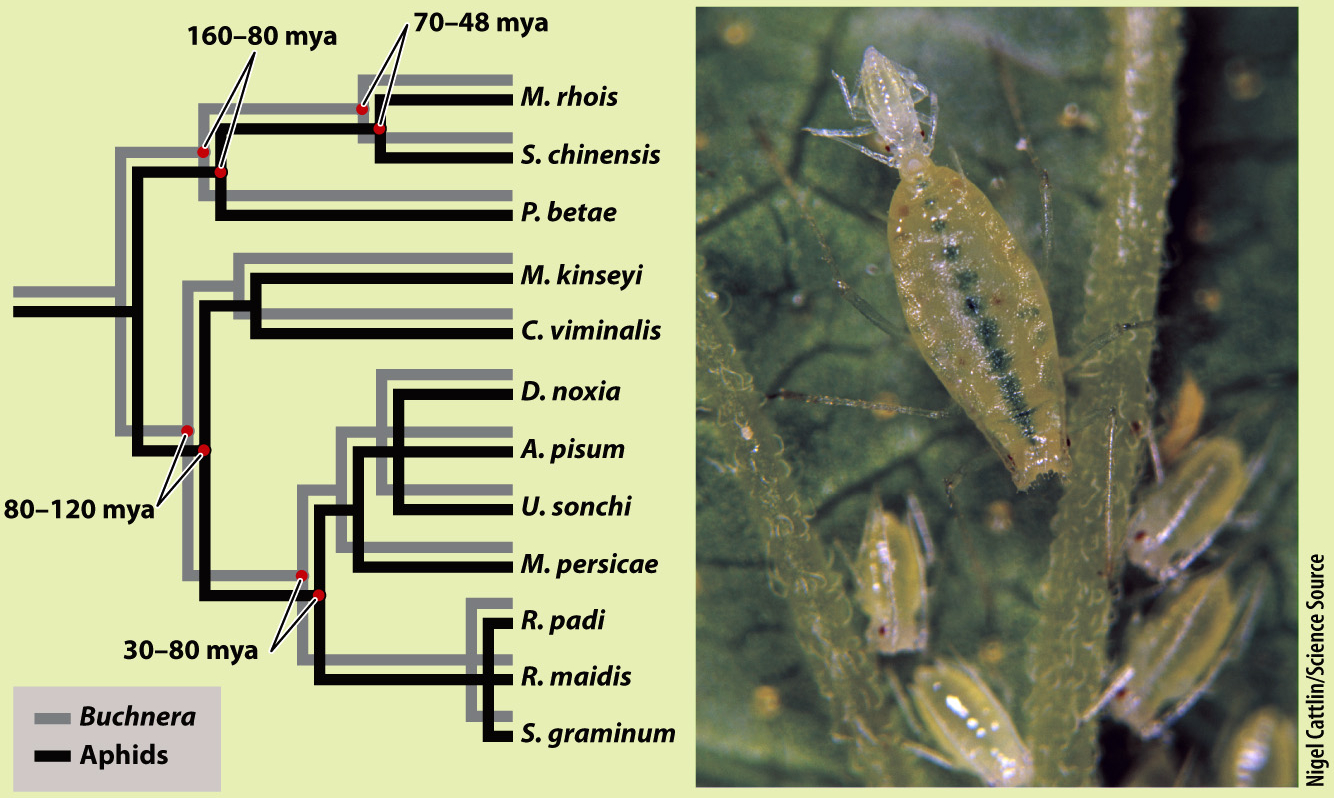HOW DO WE KNOW?
FIG. 47.8
Have aphids and their symbiotic bacteria coevolved?
BACKGROUND Aphids are small insects that are common pests of garden plants. Specialized cells in the aphids harbor populations of the bacterium Buchnera that provide their host with amino acids essential for growth. Mother aphids pass the bacteria through their eggs to their daughters.
HYPOTHESIS Aphids and Buchnera bacteria have coevolved for millions of years.
EXPERIMENT Evolutionary ecologist Nancy Moran sequenced the DNA of bacteria and the aphids they come from to establish the phylogenetic relationships of aphid species and their symbionts. She reconstructed the phylogeny of both groups and compared their relationships. If the two phylogenies matched each other, the hypothesis of coevolution would be supported.
RESULTS The phylogenetic trees of aphids and their associated bacteria matched perfectly, just as if the bacteria were a gene of the aphids instead of a separate group. This matching of phylogenetic trees was seen both among aphid species in different genera and for aphid populations within a single species. A DNA-

CONCLUSION A single group of Buchnera has been passed down through the generations and the diversification of its aphid hosts for nearly 200 million years. Host–
FOLLOW-
SOURCE Moran, N. A., et al. 1993. “A Molecular Clock in Endosymbiotic Bacteria Is Calibrated Using the Insect Hosts.” Proceedings of the Royal Society. London, Series B, 253:167–